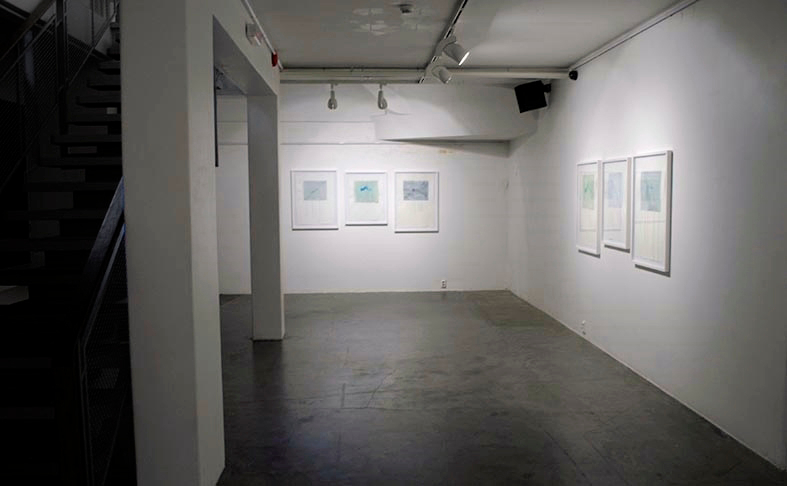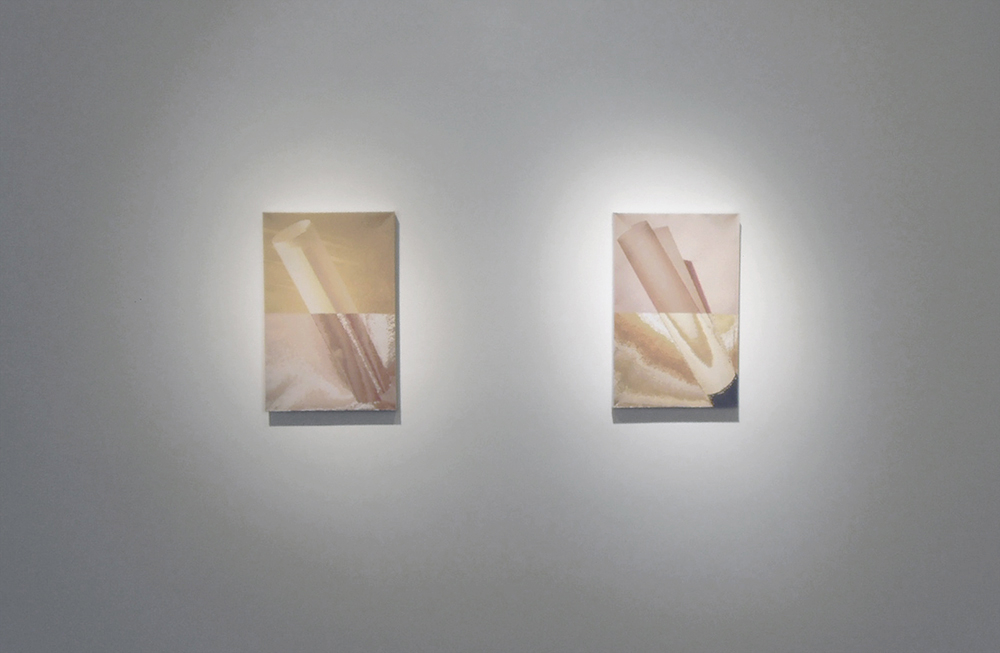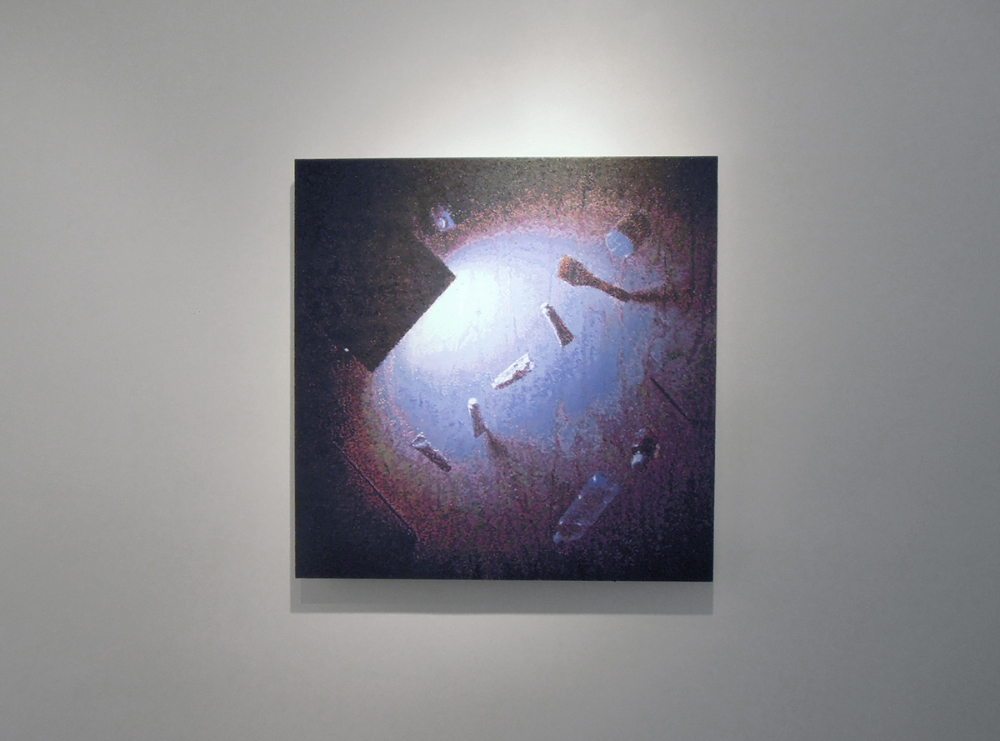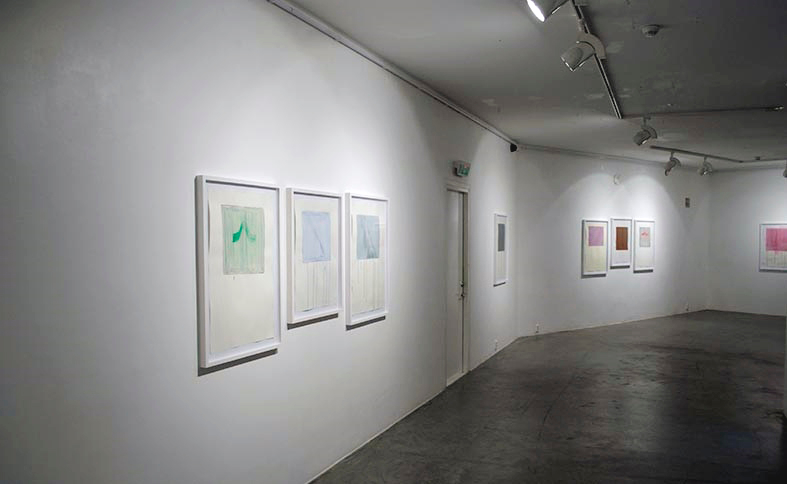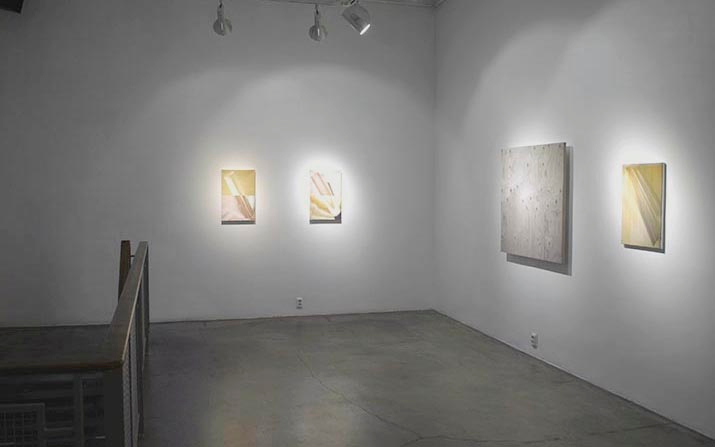
This exhibition left me speechless with its impact on me – the impact of no impact.
The artist proposes scenarios in the concept of the exhibition on the subject of how kids see and interact with a boat (or its image). In that spirit I would like to propose four different ways in which an exhibition can have an impact on its audience. First way would be to capture the audience in a visually striking way, the way that pop art does (or did), to have that effect the audience doesn’t need to have any additional information along with the exhibition; the works are visually strong enough by themselves. The second way is to present the audience with an intriguing conceptual problem or a point of view. In this case the audience needs to understand the context around the exhibition and this is usually accomplished with the help of a catalogue or an accompanying text. The third type of exhibition entertains or amuses its audience through the content and form of the artworks. It might have a conceptual meaning to it or it might just rely on the entertainment factor. This role of art has been largely taken over by entertainment in modern society, but is still strong in prankster art for example. The fourth way is to form a series through several exhibitions so that the development of the artist and his technique is exhibited through the succession and becomes the complete art piece by itself. This can also apply to artists who see their own identities as works of art. This exhibition didn’t fall into any of the four categories for me. As I haven’t seen the artist’s other exhibitions before, I can not judge these artworks in a diachronic perspective.
The exhibition consist of ten something artworks which are either paintings or graphic pieces (the technique is mentioned nowhere nor are there any titles). Some motives are repeated while others seem rather random among the others. The style ranges from impressionist pointillism to abstract paintings and works inspired by digital photo manipulation. There is no visually coherent symptom connecting all the works in the exhibition. The images are all of a medium-small format and rather simple from a technical perspective. Some of them are canvases while others are on paper – framed and put behind glass. The colours are mostly dim and the white frames blend into the walls of the gallery, so the walls dominate over the artworks. As visual motives we see a half pixelated and inverted scrolls, floating tubes of paint, waves, twists, a wood pattern, stripes and a lot of paint drips.
The conceptual text of the exhibition consists of two parts. The first part attempts to conceptualize and explain the motivation of the painting process. The second part focuses on different possibilities of a child’s (or children’s) interaction with a boat, nuts and a candy. I will focus on the first part of the text and the reader can draw conclusions from the second part by themselves.
The first part of the text ends with this section: “A few questions and observations that come to my mind: What does it mean to be in possession of a language? What does it mean to be possessed by an inappropriate language? What is good (what is the right way)? What is wrong (what is the wrong way)? How to make difference between them? How to find out the most important things?”.
For me it is the most informative part of the exhibition. The artist promises observations and questions but then only presents the latter. In the light of this the whole exhibition becomes a series of questions. Each artwork is a loosely formulated question. The possibility of anyone getting answers from the works is not too likely. As the inquiry is so vague one must assume that these materialized questions are ones that the artist asks of himself. So in this case the audience becomes somewhat superfluous.
“While exposing an image I am creating the best way to relate myself to life. The language of painting (or the language of image in general) is the most precise way for me to define life.” Image is something that would need to be disposed of in order to expose something, because an image is a model of the “real thing” (if we choose to believe that there is a “real world” beneath our sign systems). Nonetheless I suppose the mediation of life through image is the most common one today as demonstrated by Tumblr and Instagram. My personal favourite one of the art pieces is the blue painting with floating painting equipment. The act of painting your paint supplies could be compared to a photo of taking a photo, or a selfie. This kind of self-reflexivity or meta-creation also points to meditation and auto-communication. So it becomes yet again clearer that this exhibition is about the artist and mostly for the artist.
This is the second part of the text (which also ends with questions). I won’t go into literary analysis, but since a couple of people I discussed this exhibition with said this was their favorite part, I can’t omit it.
“A child sees a boat on the coast. He runs towards it. Then stops halfway. Makes a few steps backwards. Observes the boat for a while. Picks up a twig. Draws a few lines on the ground in the sand. The lines vaguely resemble what he can see. The child related himself to the boat while exposing the unknown. He gave the meaning to the boat while discovering an unknown language. Who is the child?
A child sees a boat on the coast. He runs to it. He walks around it with pride. Observes it from different angles. Then runs back to his parents and tells them an amazing story about pirates, vikings, submarines and sea monsters while being out of breath. The child related himself to the boat while exposing the unknown. He gave the meaning to the boat while discovering an unknown language.
A child sees a boat on the coast. He runs to it. He tries to shift the boat but it is too heavy and he won’t succeed. So the child gets so emotional that tears will burst out of his eyes. The child won’t give up. He breathes in deeply. With tears in his eyes, he decisively attempts to have another go: he pushes the boat again from every angle. The child related himself to the boat while exposing the unknown. He gave the meaning to the boat while discovering an unknown language.
A child sees a boat on the coast. He runs to it. He touches the boat delicately yet assuredly. He listens to the breathing of the boat, the beating of its heart. The child caresses the time-worn spots (scars and wounds) of the boat. The child related himself to the boat while exposing the unknown. He gave the meaning to the boat while discovering an unknown language.
A child sees a boat on the coast. He runs to it. He catches the sight of a small loose nut on the bottom of the boat. The child takes the nut and replaces it with his favorite candy that he has in his pocket. The child related himself to the boat while exposing the unknown. He gave the meaning to the boat while discovering an unknown language.
A child sees a boat on the coast. He runs to it and gently hits it, listening to the way it echoes back. He pounds at the sides of the boat. He throws himself into the boat and listens to the way the roaring of the sea and the echo of his breathing are intermingling and flowing over him. The child related himself to the boat while exposing the unknown. He gave the meaning to the boat while discovering an unknown language.
Child A sees a boat on the coast. He runs to it. He sees how child B takes the loose nut from the boat and replaces it with a candy. Child A is being encouraged by his parent to do the same thing as child B. When child A behaves the same way as other children he won’t have to make decisions nor take responsibility. Child A runs to the boat. He finds a loose nut from the boat and replaces it with his favorite candy. Then he runs back to his parent to show how well he has done. Halfway he has the feeling that something is wrong, that something is missing. He goes back to the boat and takes his candy back. Yet, something is still missing. He eats the candy. For a moment, he feels better. As soon as he cannot feel the sweet taste in his mouth, he starts to feel bad again. Child A takes the candy that Child B has left to the boat and eats this, too. Something is still missing. Child A hurries back home in order to find all the candies in the house and eats them all. The more he eats, the more evil and mean he becomes, the more he forgets and drifts away from everything that is important and dear to him. The child asks his parents to buy him more and more sweets. But even if he gets all the candies in the world, these won’t replace the emptiness in him. Why didn’t Child A relate himself to the boat? Why didn’t Child A give the meaning to the boat and made the same mistakes again and again?”
This seems to wander off into questions of raising children and the innateness of evil in people. I did not get too deep into its semantics as I did not see it directly connecting to the body of works. Though the reader has the right to do so.
The whole exhibition presents a bulk of questions that the artist has asked himself through his paintings (and text). I very much respect art as a form of mediation and a tool to make sense of life, but the question that comes into my mind is – should art that doesn’t require more of an audience than its creator be exhibited in a gallery and be funded by two different state institutions? As it is usually with art, the answer depends on your personal preference. I’ll be sure to visit August Sai’s upcoming exhibitions.
